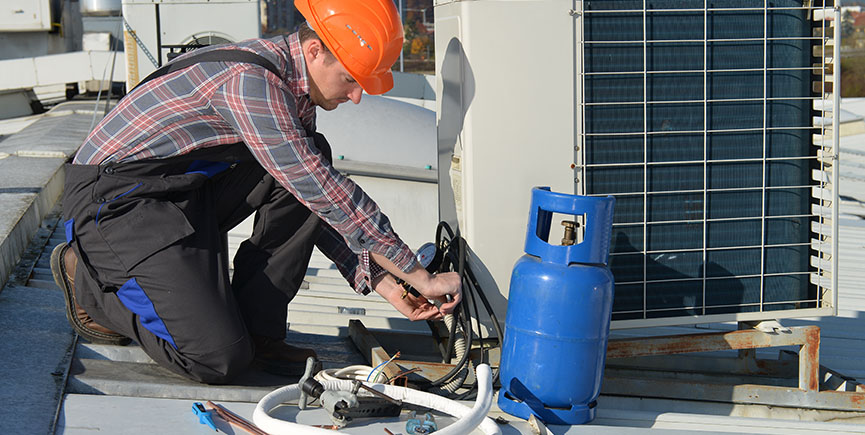A complete guide to fixing your air conditioner

A complete guide to fixing your air conditioner
When the house feels warm and sticky, start with a calm review of what changed recently. Did the season turn humid, did you add new appliances, or did the power blink last night. For tasks beyond your comfort zone, reputable air conditioner repair services can save time and guesswork while keeping parts safe. Keep basic checks on your list because strong maintenance habits prevent bigger headaches. Notice symptoms early and trust your senses, since small hints often point to the real cause.
Safety First and Simple Prep
Before touching the system, cut power at the service switch and the breaker, then verify with a quick test. A few minutes spent on safety prevents costly mistakes. Wear gloves when you open panels, and keep pets away from tools and wiring. Good airflow around the unit helps even during basic checks. A tidy work area improves focus and lowers risk. Respect safety and keep your filters handy for cleaning or replacement. Work with steady patience and clear steps to avoid surprises.
Thermostat and Power Path
A tired thermostat can mimic a failing unit, so confirm that it is set to cool and that the fan responds. If the screen looks dim, replace batteries and try a lower temperature set point. Check the indoor service switch, often near the air handler, and then the electrical panel for a tripped breaker. Reset once and watch for consistent operation. If power returns and then drops again, the issue may be deeper. Inspect thermostat wiring and confirm breaker position. Keep settings simple and track changes in a notebook.
Airflow and Filter Basics
Poor airflow makes rooms clammy and pushes the system to run longer than it should. Pull the return filter and hold it to the light, then replace if it looks dull or gray. A fresh filter protects coils and keeps air moving with less strain. Look at supply registers for dust buildup and move furniture that blocks vents. Your goal is steady, quiet circulation. Guard airflow first, then choose the right filter rating for your needs. Reduce dust loads indoors and block sunlight during peak hours to help performance.
Outdoor Unit Housekeeping
Step outside and look closely at the condenser. Leaves, seed fluff, and grass clippings act like a blanket, trapping heat that should flow away. Trim plants several feet back and lift debris from the base without bending thin metal fins. Make sure the fan spins freely and the enclosure sits level on its pad. If the unit tilts, vibration increases and pipes can stress. Clear the condenser cabinet carefully and rinse the coil from the inside out with a gentle stream. Keep garden tools tidy and maintain open clearance around the sides.
Coil Care and Gentle Cleaning
The indoor evaporator coil often hides behind a simple access panel. When the coil loads with dust, the system loses cooling power and may freeze. With power off, brush loose lint from the face and use a no-rinse cleaner approved for HVAC coils. Straighten bent fins with a fin comb to restore path area for air. Avoid harsh sprays near electronics and keep the drain pan in view while you work. A clean evaporator keeps the fins efficient. Use a soft touch and a light spray so nothing warps.
Refrigerant Clues and When to Pause
If air is cool but weak, or if frost forms on lines, refrigerant may be low. That usually signals a leak, not normal use. Listen for hissing near joints and feel for temperature differences along insulated pipes, but stop short of opening the circuit. Adding refrigerant without finding a leak only delays the next failure. Skilled refrigerant diagnosis protects the compressor and confirms proper charge by superheat and subcool readings. In the middle of the project, many owners rely on AC repair services Smithtown for sealed-system work. Watch pressures stabilize and note temperatures at the vents.
Water Where It Should Not Be
A clogged drain can stop cooling and create a small indoor waterfall. Algae and dust mix inside the condensate line until flow slows to a trickle. Find the cleanout cap near the air handler, remove it, and flush with warm water or approved cleaner. If your system has a float switch, test it gently, then seat it back in place. Keep the pan dry after each cooling cycle. Confirm drain slope and clear the condensate trap if your model includes one. Tackle algae early and prevent messy overflows with periodic rinses.
Noises, Starts, and Electrical Helpers
Short runs, loud humming, or a fan that tries and fails often point to a weak capacitor. With power off and a safe discharge, a qualified tech can test and replace quickly. The contactor can also pit and stick over time, causing intermittent starts. While panels are open, look for insulation rubbed through or wires that run too tight across sharp edges. Replace broken grommets and tidy routing. Healthy capacitor values and a clean contactor keep motors honest. Notice humming patterns and watch startup behavior to catch problems early.
Ducts, Leaks, and Even Rooms
When one room stays hot while another feels fine, the ducts may tell the story. Look for gaps at joints, crushed branches in the attic, or flex runs bent too sharply. Seal with mastic or approved tape rather than cloth duct tape. Balance dampers a little at a time and allow the system to stabilize between changes. If returns are small, airflow starves and comfort drops everywhere. Well-sealed ductwork and open registers help every part of the home. Seek balance across spaces and respect natural airflow paths.
Comfort, Bills, and Small Tweaks
Little adjustments add up over a season. Shade the outdoor unit during the hottest hours without blocking air, and close blinds on windows that face the sun. Add attic insulation where it is thin and seal gaps around doors. Set a smart schedule that mirrors your routine, but avoid aggressive setbacks that make the unit sprint on return. Clean the blower wheel if dust has collected on the blades. Aim for steady efficiency and practical insulation gains. Notice the utility bill month to month and enjoy quieter operation when airflow improves.
When Replacement Makes More Sense
Older systems can run faithfully for years, yet there comes a point when repairs add up to the price of new equipment. Compare age, reliability, and parts availability. Loud compressors, repeated capacitor failures, and coil leaks are common signs that a bigger decision is near. If you upgrade, match capacity to real loads rather than old rules of thumb. Ask manufacturers about refrigerants and long warranties, then keep paperwork together for easy claims. Respect warranty terms and verify correct sizing during design. Track unusual noises and persistent odors so decisions rest on facts.
Seasonal Rhythm and Record Keeping
Spring and early summer are the right time for deep cleaning, while late summer invites a second pass on filters of the air conditioner and drains. Keep a small notebook for dates, part numbers, and service notes. Write down weather patterns when problems appear, since extreme humidity can change behavior. Photograph wiring before you disconnect anything and label panels as you go. These habits make future work simpler and safer. Good schedule discipline and clear records turn a tricky system into a predictable partner. Use spring tune-ups and plan a light autumn check as temperatures fall.
Conclusion
Most cooling problems start small, then grow when airflow weakens or water pools where it should not. Slow down, follow a simple path from power to thermostat to coils and drains, and stop when the task asks for specialized gauges or sealed-system skills. Keep plants trimmed, filters fresh, and panels clean. When the layout of your home calls for targeted cooling or you plan a bonus room, consider modern options such as a ductless air conditioner Ronkonkoma for flexible placement and quiet operation. Thoughtful zoning design supports daily comfort, while steady care and timely checks keep summer easy.

